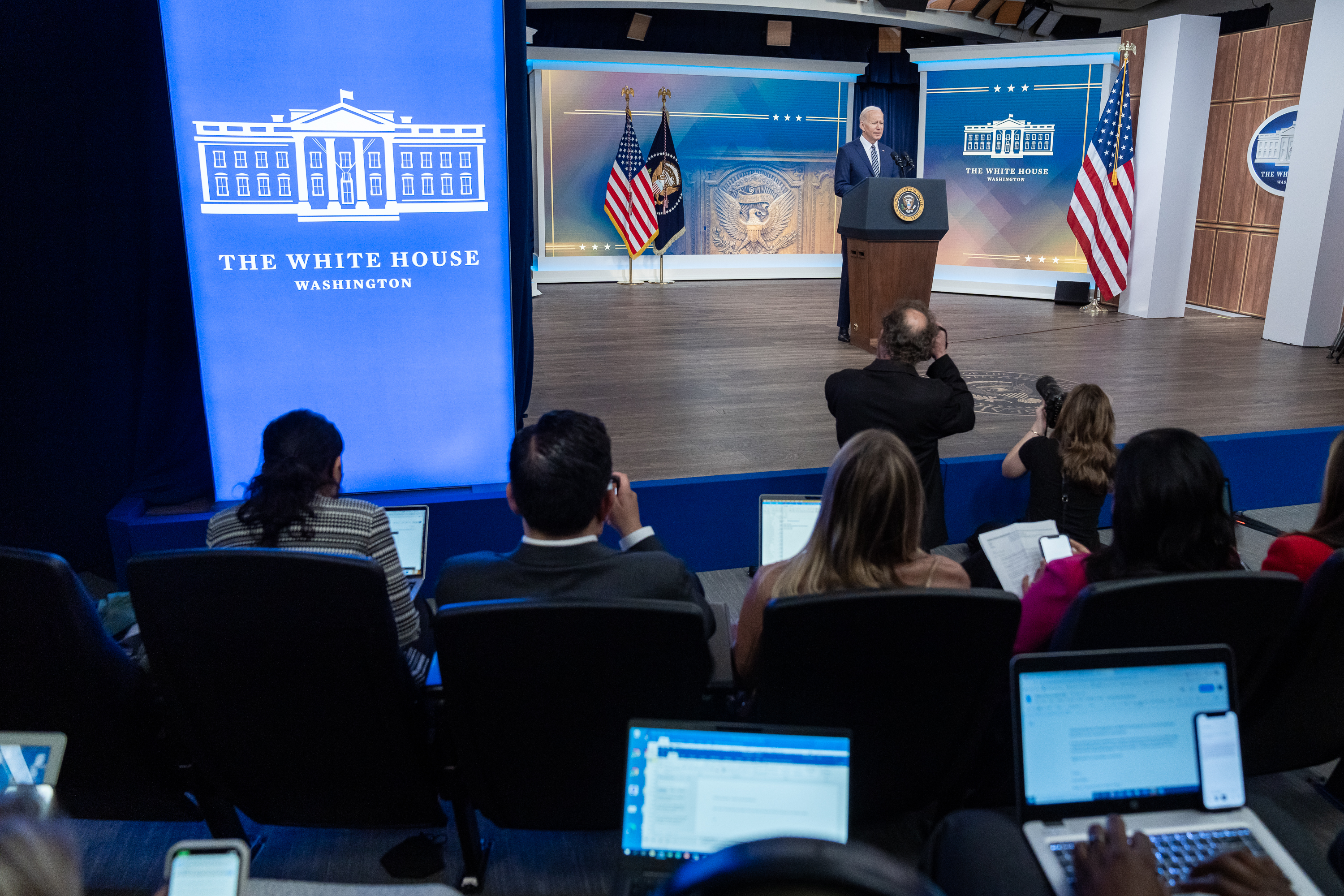The Defense Production Act’s Role in the Clean Energy Transition

Published by The Lawfare Institute
in Cooperation With

The global energy crisis and supply chain disruptions have recently shone a spotlight on the scarcity of critical minerals used in electric vehicle batteries. China recently announced restrictions on gallium and germanium exports, two minerals used in a wide variety of applications. Russia’s invasion of Ukraine also exposed the brutal dangers inherent in an overreliance on a key economic input from a hostile state. Although China dominates the critical mineral supply chain, the Biden administration has been pushing for greater domestic production and sourcing of minerals and parts of the battery supply chain from allies. One of the Biden administration’s key tools is the little known Defense Production Act (DPA), a Korean War-era policy designed to secure war materials. Today, the administration is employing it for a different purpose: the clean energy transition, a process that the administration classifies as an existential security priority.
Amid increasing economic and security tensions between the U.S. and China, U.S. policymakers worry that dependence on Chinese inputs for the clean energy transition is a national security risk. It is unclear if these markets will prove robust in the event of a conflict or if China can use its dominance for coercive leverage by threatening to withhold exports. While a disruption in minerals and battery markets would have different impacts than hydrocarbon supply disruptions, U.S. policymakers see “de-risking” through supply chain diversification for these products as prudent.
There are a variety of other tools that the U.S. government has to support critical minerals, including Department of Defense procurement and the work of the Department of Energy’s Loan Programs Office. The DPA can work in concert with these instruments to induce more domestic production and sourcing of these materials from countries friendly to the United States.
The DPA, which was modeled after the War Powers Acts of 1941 and 1942, allows the federal government to begin prioritizing national defense over private-sector needs. The current version of the law allows the president, through executive order, to allocate “materials, services, and facilities” for national defense purposes and to offer loans or guarantees to private companies. During the 1950s, President Truman used the act to regulate the steel and mining industries, ensuring the U.S. military could procure adequate wartime supplies. As the Cold War escalated, the Truman administration employed the DPA to boost the supply of manganese, a mineral critical for steel production and one that was put under an embargo by the Soviet Union. Truman also invoked the DPA to establish domestic aluminum and titanium industries through the provision of capital and interest-free loans.
The Eisenhower and Kennedy administrations continued to utilize the DPA for boosting domestic mining production and defense purposes, but it was only after the 1967 oil crisis that the act was used specifically to safeguard energy security. As part of this effort, the Johnson administration tasked the Department of the Interior with utilizing the act to refurbish old oil tankers to increase oil imports. During the 1973 oil crisis, the Nixon administration used the DPA to divert 826 million gallons of fuel from existing delivery contracts to the military during the Vietnam War.
President Carter, inheriting the poisoned chalice of domestic energy crisis and economic malaise, continued to employ the DPA in novel ways by directing research and development for new fuels made from coal and natural gas. In the face of long-term structural energy challenges, Congress passed the Energy Security Act of 1980, designating energy as a “strategic and critical material” under the DPA. This allowed the Carter administration to take this designation as the basis to develop and procure domestic energy supplies crucial to national security.
President Trump invoked the DPA to reduce U.S. dependence on China for rare earth elements and their varied supply chains due to the crucial role of these elements in advanced defense systems and technologies. Unlike its predecessors however, the Biden administration has expanded the mandate of the DPA beyond the procurement of materials required for the military or hard national security. Citing climate change as “the existential challenge of our time,” the Biden administration is employing the DPA to ensure the supply of materials needed for the clean energy transition. The supply chains initially of interest for the Biden administration are those associated with large-capacity batteries for electric vehicles and stationary storage. Such large-capacity batteries are of increasing use in military technologies even as most of the applications are likely to be civilian. The use of the DPA is also highly attractive for its ability to tie security drivers to clean energy deployment (in addition to their environmental attributes).
In March 2022, President Biden used the powers granted in the DPA to designate five critical minerals associated with the production of electric vehicle batteries (lithium, nickel, cobalt, graphite, and manganese) to help spur innovation and supply of the minerals domestically. While the act did not provide direct funding via loans to mining companies, it did direct the Department of Defense to conduct feasibility studies on known mining reserve locations in an attempt to drum up investor appetite and de-risk proposed and future mineral mining and refining projects.
Under Section 303 of the DPA, the president can direct purchases and purchase commitments, encourage exploration, develop productive capacity, and increase certain technologies. However, not all of these authorities were fully exercised with the president’s 2022 action. For example, if the president wanted to enable the secretary of defense to make subsidy payments, he would have to explicitly authorize that in subsequent action. Moreover, Congress would have to provide appropriations for loans or loan guarantees. As we have argued before, more likely needs to be done to top up available resources in the Defense Production Act Fund to support these activities.
U.S. reliance on imports and China’s current dominance of the mineral refining and processing and battery subcomponents markets is motivating these moves. Cobalt, for example, is one of the key ingredients in the lithium-ion battery. Officially, China accounts for only 1 percent of the world’s mined supply (the vast majority originates in the Democratic Republic of the Congo). But China holds 75 percent of the world’s refining capacity. The story is similar when it comes to other critical minerals. When fully produced with subcomponents, Chinese firms hold a 70 percent share of the world’s production capacity of lithium-ion batteries.
As part of this effort, the Biden administration has recently widened its use of the DPA to push domestic development of solar, wind, and other renewable sources through the Department of Energy. In June 2022, the administration invoked the DPA to help boost domestic supply chains and production of five renewable technologies: solar; transformers and electric grid components; heat pumps; insulation; and electrolyzers, fuel cells, and platinum group metals.
Beyond the DPA, the Biden administration has taken bold actions toward a clean energy future through legislation such as the Inflation Reduction Act, the Bipartisan Infrastructure Law, the CHIPS Act, and executive orders. Together, these actions have helped spur a range of investments for domestic manufacturing around clean energy technologies.
With these other instruments in place, how should the administration best align their outcomes with the DPA to increase domestic and allied production? A persuasive case is to use the DPA to focus on time-limited supply side interventions to help domestic manufacturers expand capacity and add equipment.
One example of this strategy centers around graphite—the main material in battery anodes—a material for which China dominates both upstream mining and production and downstream processing. As demand for electric vehicles increases, graphite demand will likely take off. The Department of Energy Loan Program Office has already supported a graphite processing plant in Louisiana, but there are other steps in the supply chain where the DPA and other instruments could leverage domestic production, including identifying suitable sites for domestic sourcing. A recent U.S. Geological Survey report validated large graphite deposits in Alaska’s Seward Peninsula. If the U.S. is serious about on-shoring domestic production, it should support private companies that wish to tap these resources while holding them to high environmental standards.
Even with the Biden administration’s strong commitment to clean energy, the U.S. government still needs a wider array of policy options to help facilitate this future while securing the materials necessary to do so. For the DPA to work, the government must also address the regulatory process that oversees domestic extraction and production processes. Other issues include tackling rural bureaucracy and a lack of human capital in mining, and taking strong action in clean energy to supply mining operations. If a primary aim is to reduce dependence on China within these complex supply chains, further concerted efforts to increase refining and processing capacity domestically or in friendly countries should be an urgent policy goal.





.jpeg?sfvrsn=ad4bd1de_5)


